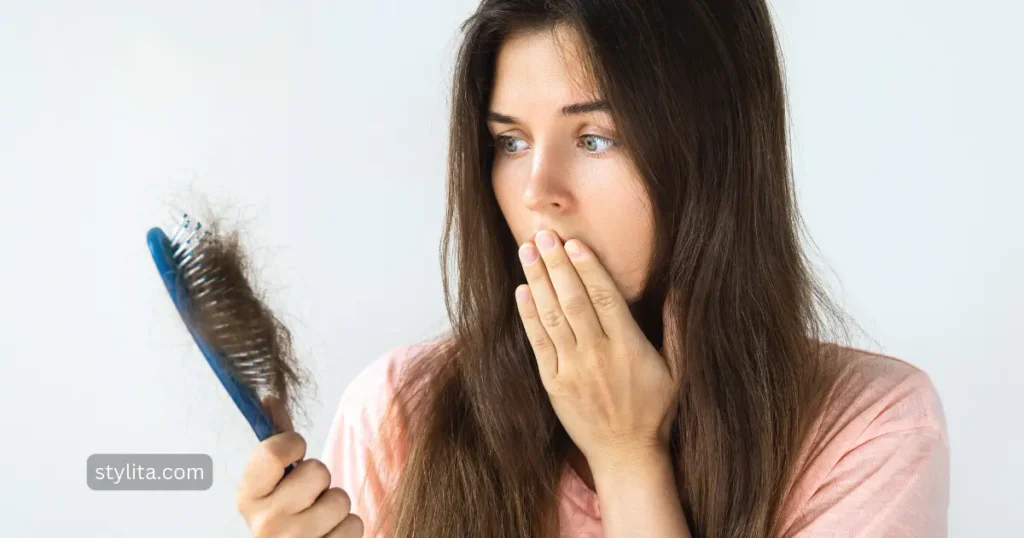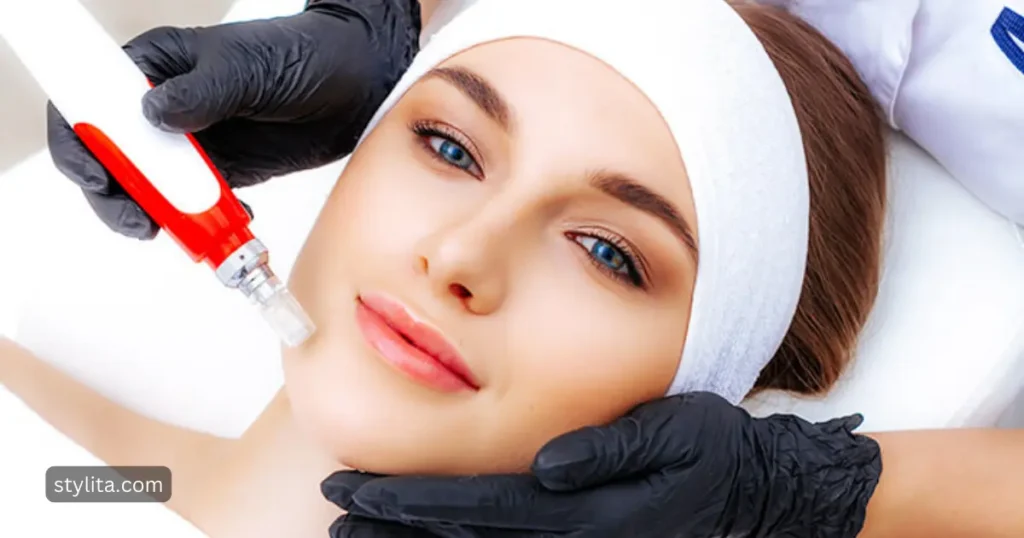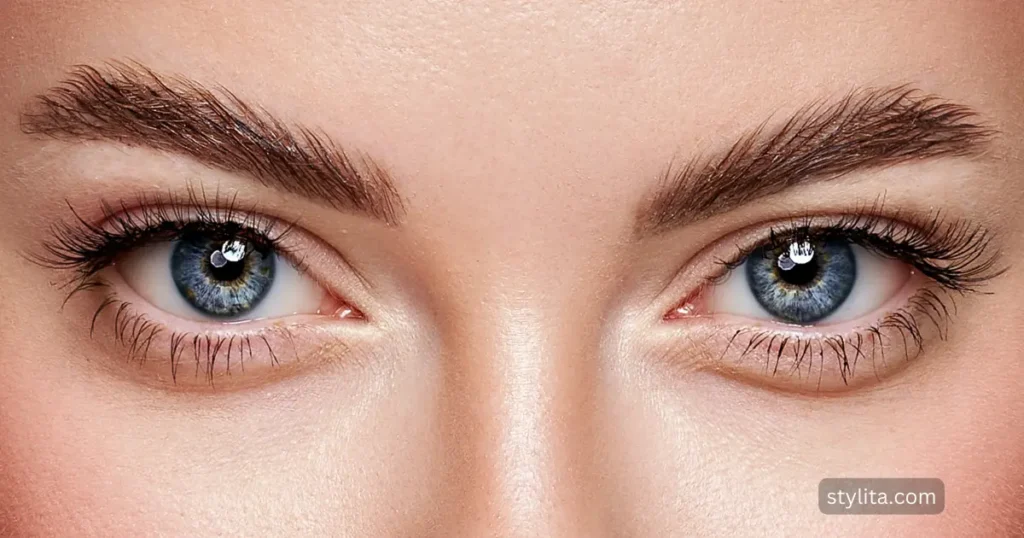Knowing why your hair breaks is the first important step to keep it healthy and vibrant. Hair breakage occurs when the structure of your hair weakens, leading to split ends and a dull look. Here we’ll look at why hair breaks and how it affects your hair health. By the end, you’ll have easy solutions to stop hair breakage naturally right away and keep your hair healthy.
Table of Contents
Understanding Hair Breakage
Hair Structure:
Your hair is made of something called keratin, which is a kind of protein. It’s important to know how is this protein put together. Understanding this helps you take care of your hair better. The outer layer, cuticle, protects the inner layers. Damage to the cuticle weakens the hair, leading to breakage.
Moisture Balance:
Maintaining the right moisture balance is crucial. Dry hair is more prone to breakage, while excessive moisture can lead to swelling and damage. Striking the right balance ensures healthy, resilient strands.
Environmental Influences:
External factors like sunlight, humidity, and pollution can impact hair health. Sunlight, like UV radiation, can harm the outer layer of your hair, called the cuticle. This makes your hair more likely to break.
The Impact of Hair Breakage on Hair Health
Thinning and Loss:
Untreated breakage can escalate, leading to thinning and excessive shedding. If your hair is not strong, it might break. This can make your hair look damaged, and sometimes, this damage can’t be fixed.
Reduced Elasticity:
Breakage affects the hair’s elasticity, making it more prone to snapping under tension. Healthy hair should stretch and return to its original state without breaking.
Appearance:
The appearance of your hair reflects its health. When your hair breaks, it might not look as nice. It can become uneven and have split ends, which doesn’t look good.
Causes of Hair Breakage
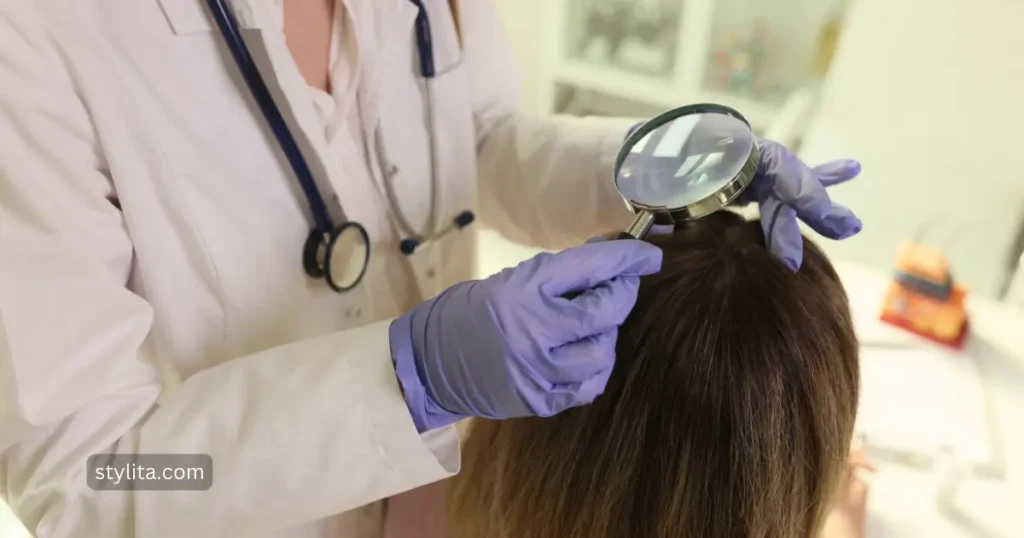
Understanding the specific causes of hair breakage is crucial for effective prevention.
Environmental Factors
UV Radiation
How UV Radiation Affects Hair:
UV rays can break down the protein structure of the hair, leading to weakened strands. Understanding how sunlight impacts your hair allows for proactive protection.
Preventive Measures:
If you wear hats or scarves or use special hair products that block the sun, it keeps your hair safe from the sun’s harm. These things give your hair an extra layer of protection.
Harsh Weather Conditions
Impact of Weather on Hair:
Extreme weather conditions, whether hot or cold, can stress your hair. When it’s hot, your hair might lose water and become dry. In cold weather, it can also get dry and easily break.
Protective Measures:
To keep your hair safe, you can try hairstyles that protect it. Use products that suit the weather, and cover your hair when it’s very extreme outside. These things help prevent damage to your hair.
Chemical Damage
Overuse of Styling Products
Buildup and Breakage:
When you use styling products often, they can build up on your hair. This makes your hair heavy and more likely to break. It’s good to be careful with how much you use.
Balanced Styling:
To keep your hair from getting too much stuff on it, use styling products the right way and pick good ones. This way, you can still create the styles you want without causing any problems.
Coloring and Chemical Treatments
Chemical Impact on Hair Structure:
When you color or use chemicals on your hair, it can change how your hair is put together. This makes it weaker and more likely to break.
Minimizing Damage:
You can make your hair stronger by coloring it less often and trying hairstyles that protect it. This way, you can still change your look without hurting your hair too much..
Mechanical Stress
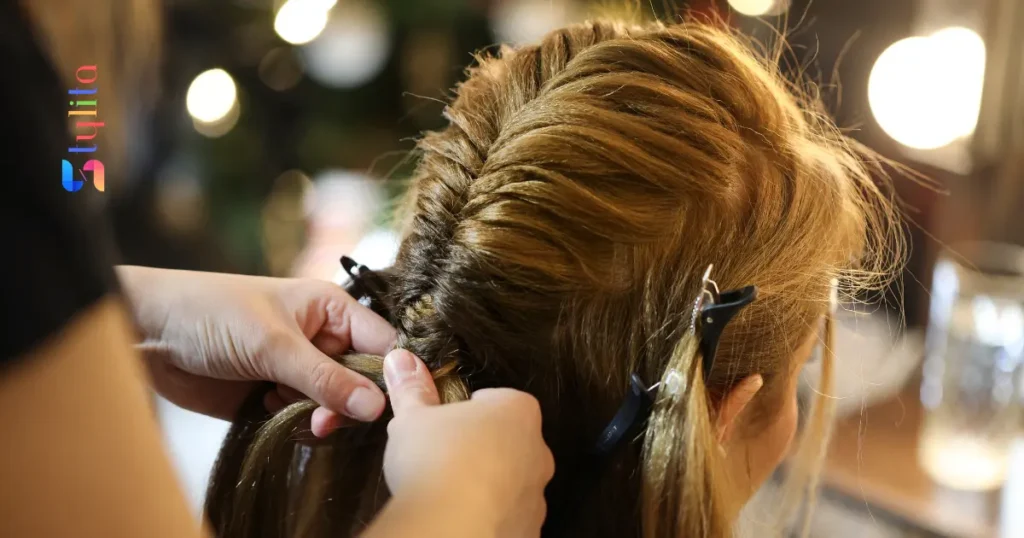
Improper Brushing and Combing
Effect of Improper Techniques:
Brushing and combing improperly can cause friction, leading to cuticle damage and breakage.
Gentle Techniques:
Learning proper brushing and detangling techniques minimizes mechanical stress, maintaining hair health.
Tight Hairstyles
Tension on Hair Strands:
When you wear tight hairstyles, it pulls on your hair all the time. This can stress your hair and make it more likely to break.
Low-Tension Alternatives:
Exploring hairstyles that distribute tension evenly prevents breakage without compromising style.
Identifying Hair Breakage
Recognizing the signs of hair breakage is crucial for timely intervention.
Signs and Symptoms
Visible Signs:
Watch out for signs like a different feel to your hair, more split ends, and uneven lengths. These are hints that your hair might be breaking.
Tactile Cues:
Run your fingers through your hair regularly. Increased hair shedding or a rough, uneven texture may or show breakage.
Types of Hair Breakage
Split Ends:
Split ends happen when the hair at the bottom splits into two. This can be because of things like the environment or how you handle your hair.
Mid-Shaft Breakage:
When your hair breaks along its length, it shows that your hair is weak and there might be health issues.
Understanding these types allows for targeted treatment and prevention strategies.
Instant Solutions to Stop Hair Breakage
Effective solutions need a multifaceted approach.
Moisturizing and Hydration
Choosing the Right Moisturizing Products
Hydrating Ingredients:
Try to find products that have things like aloe vera, glycerin, and hyaluronic acid in them. These ingredients are good for keeping your hair hydrated.
Regular Moisturizing Routine:
Incorporate moisturizing into your routine, adjusting based on your hair’s unique needs.
DIY Hydrating Hair Masks
Natural Hydrating Agents:
Have some fun making your own hair masks at home. You can use things like avocado, honey, and coconut oil to make your hair hydrated.
Protective Hairstyles
Introduction to Protective Styling
Understanding the principles behind protective styling is essential for preventing hair breakage. Protective styles keep your hair safe from things that might harm it from the outside. This helps prevent damage and keeps your hair healthy.
Benefits of Protective Styling:
– Reduces exposure to environmental factors.
– Prevents mechanical stress on hair strands.
– Retains moisture, minimizing dryness and breakage.
Choosing the Right Style:
Consider your hair type and length when selecting a protective style. Options include braids, twists, buns, and more.
Popular Protective Hairstyles
Braids
Benefits of Braids:
– Distribute tension evenly across the hair.
– Provide a break from daily styling routines.
– Offer versatility in styling and customization.
Maintenance Tips:
– Keep braids clean and moisturized.
– Avoid excessive tightness during installation.
– Protect hair at night with a satin or silk scarf.
Twists
Advantages of Twists:
– Promote hair retention by minimizing manipulation.
– Allow for creative styling options.
– Compatible with various hair textures.
Maintenance Guidance:
– Moisturize regularly to prevent dryness.
– Untwist gently to avoid breakage.
– Rotate twist styles to prevent stress on specific areas.
Buns and Updos
Pros of Buns and Updos:
– Provide an elegant and polished appearance.
– Keep hair strands secure and protected.
– Offer versatility for different occasions.
Styling Tips:
– Avoid excessive tightness when securing the bun.
– Use hair-friendly accessories like scrunchies.
– Change the placement of the bun to distribute stress evenly.
Professional Treatments and Products
Professional interventions can play a pivotal role in repairing and preventing hair breakage.
Salon Treatments for Hair Repair
Deep Conditioning Treatments:
– Replenish moisture and strengthen the hair shaft.
– Target specific concerns such as dryness or protein deficiency.
Hair Masks and Scalp Treatments:
– Address specific issues like dandruff or excessive oiliness.
– Promote scalp health for stronger hair growth.
Recommended Hair Care Products
Shampoos and Conditioners
Choosing the Right Shampoo:
– Consider your hair type (dry, oily, curly) when selecting a shampoo.
– Look for sulfate-free options to avoid excessive drying.
Conditioning for Strength:
– Use conditioners that focus on moisture and repair.
– Incorporate leave-in conditioners for added hydration.
Leave-in Treatments and Serums
Benefits of Leave-in Treatments:
– Provide continuous protection throughout the day.
– Seal in moisture, reducing the risk of breakage.
– May contain more benefits like heat protection or UV filters.
Incorporating Serums:
– Choose serums with ingredients like argan oil or keratin.
– Apply serums to the tips of the hair to prevent split ends.
Lifestyle Changes for Healthy Hair
Lifestyle choices can impact the health of your hair.
Managing Stress
Stress Reduction Techniques:
– Incorporate mindfulness practices such as meditation or yoga.
– Focus on self-care activities to reduce stress levels.
Physical Activity for Stress Relief:
– Engage in regular physical exercise to release tension.
– Explore activities that bring joy and relaxation.
Getting Adequate Sleep
Quality Sleep Habits:
– Establish a consistent sleep schedule for optimal rest.
– Create a relaxing bedtime routine to improve sleep quality.
Sleep Environment:
– Use comfortable bedding and consider blackout curtains.
– Keep the bedroom cool and well-ventilated.
Benefits of Exercise for Hair Health:
– Improves blood circulation to the scalp.
– Enhances nutrient delivery to the hair follicles.
– Supports health, contributing to vibrant hair.
Scalp Massage Techniques:
– Incorporate scalp massages into your hair care routine.
– Use gentle, circular motions to stimulate blood flow.
Prevention Strategies for Long-Term Results
Effective prevention involves adopting strategies that can be sustained over the long term.
Creating a Sustainable Hair Care Routine
Personalized Routine:
– Tailor your routine to your hair type, goals, and lifestyle.
– Establish a consistent schedule for washing, conditioning, and styling.
Adaptability:
– Adjust your routine based on seasonal changes or shifts in hair needs.
– Be mindful of product effectiveness and adjust as necessary.
Monitoring Hair Health Progress
Observing Changes:
– Regularly assess the texture, strength, and overall appearance of your hair.
– Keep track of any changes in shedding, dryness, or breakage.
Consulting Professionals:
– Seek professional advice if you notice persistent issues.
– Consider a periodic visit to a trichologist for in-depth hair and scalp analysis.
Conclusion
So, to sum it up, now that you know why hair breaks and what to do about it, you can start making your hair healthier. It’s like starting a journey to stronger and better-looking hair. If you use the tips in this guide every day, you can stop your hair from breaking and keep it looking good for a long time. It’s like taking care of your hair so it stays healthy and beautiful. It’s like building a strong foundation for your hair so it stays healthy and beautiful for years to come. Remember, your hair deserves the care and attention that will keep it looking its best. Happy hair care!

